Fibery vs. Productboard. The Hard Choice.
Usually posts X vs. Y are shallow. This post is not. As the Fibery CEO, I have to switch off the bias. Take this post with a grain of salt.
The major goal is to explain how Fibery is different and what strengths and weaknesses it has to support your product development processes. Productboard is one of the best tools for product managers. However, it’s not perfect. Let’s find out why.
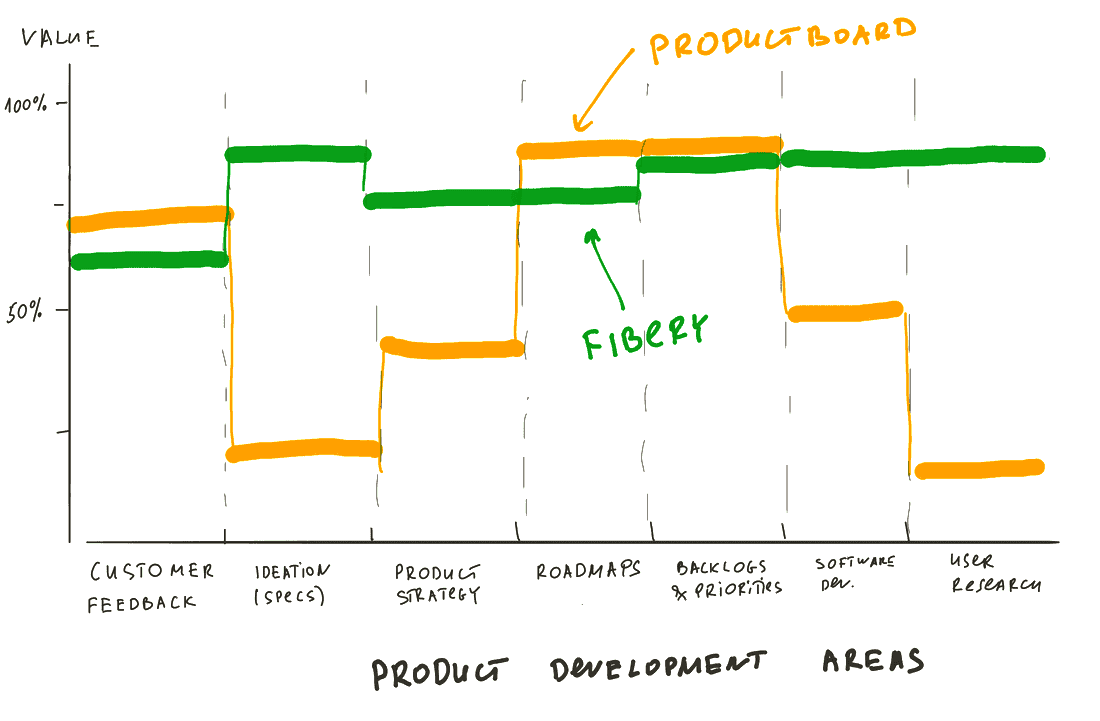
TL;DR
🍋 Productboard is great product management software. It works well for customer feedback handling, backlog management and prioritization, product roadmapping. It lacks ideation, so you’ll have to use external tools to create features specification (Google Docs, Miro, etc). It doesn’t support Software Development process, so you will have to use Linear and integrate with it. It doesn’t support user research processes, so you will have to use Dovetail. Productboard’s customizability is good, but it is quite opinionated.
Read How Fibery uses Fibery for product development. It’s a good example for a team of 20 people that work on a single product and use Fibery for everything.
🫒 Fibery is much more flexible and covers all product development areas. It lacks some depth in customer feedback handling (no Feedback Portal), roadmapping is slightly weaker in Fibery (no dependency management) and start can be harder. However, you can create beautiful feature specs in Fibery, run software development process, and plan user research studies, so not so many additional tools to use.
If you want to focus on backlogs and product roadmaps — Productboard might be a better choice. If you want to cover all product development processes — Fibery will work better.
Philosophy
Productboard is tailored, but strict
Productboard is a specialized tool for product management. It covers quite many important product development processes, but not all. Specialization has some benefits and some problems. In general, you can focus on very specific cases and do them right. On the other side, specialization usually creates narrow tools, it’s much harder to customize them and use them for other, not designed cases.
It means you have to follow the tool ideology and match it with your internal processes. If the match is 90%, then all is good and you will enjoy the tool. If the match is 70%, then you will suffer in some cases. If the match is below 50%, you will suffer all the time.
Fibery is generic but very flexible
Fibery is a no-code tool at its core. It means in theory you can construct a solution for many processes. For example, this is a solution for product management processes.
The benefit of this approach is that nothing is final. You can change the tool as you wish: add processes, remove processes, connect processes, customize processes and create a solution that fits your company.
The downside is that some specific cases might be not great and less usable than specialized tools. However, in practice, you encounter this problem not so often if you get the generic building blocks right. We believe that we do, but it is up to you to decide. Read on.
Now we’ll focus on specific product development processes and compare Productboard and Fibery for every process.
Customer Feedback handling
Customer needs drive product development and help build great products. You should listen, aggregate feedback from all possible sources into a single place, and use the feedback for decision-making about the product’s future.
💪 This area shines in Product Board. You can integrate Productboard with many tools that capture customer feedback and link feedback to features. There are connectors to Email, Intercom, Zendesk, and Slack. Here is how you can link text with a feedback to a feature:

Capture feedback from Intercom and create Insights
You can create manual Notes as well.
One problem is that you can link feedback only to Features and this is not very flexible. What if you want to link feedback to Ideas or Insights first? Maybe this thing will never become a Feature. Unfortunately, you have to emulate this by creating Features in Productboard.
Another cool thing is a Portal where you can show some features and ask for customers’ feedback.

This works as one more channel to collect feedback.
Overall, this area is very well developed in Productboard, the only missing thing is user research and conversations with customers, still, you can use manual Notes as a workaround and link them to Features.
Fibery captures product feedback from external sources as well, including Intercom, Zendesk, Discourse, HubSpot. You can also create your own integrations, but it demands some programming skills.
In Fibery feedback linking is more flexible, since you can link feedback to Insights, Ideas, Features, Tasks, Bugs and whatever you want:
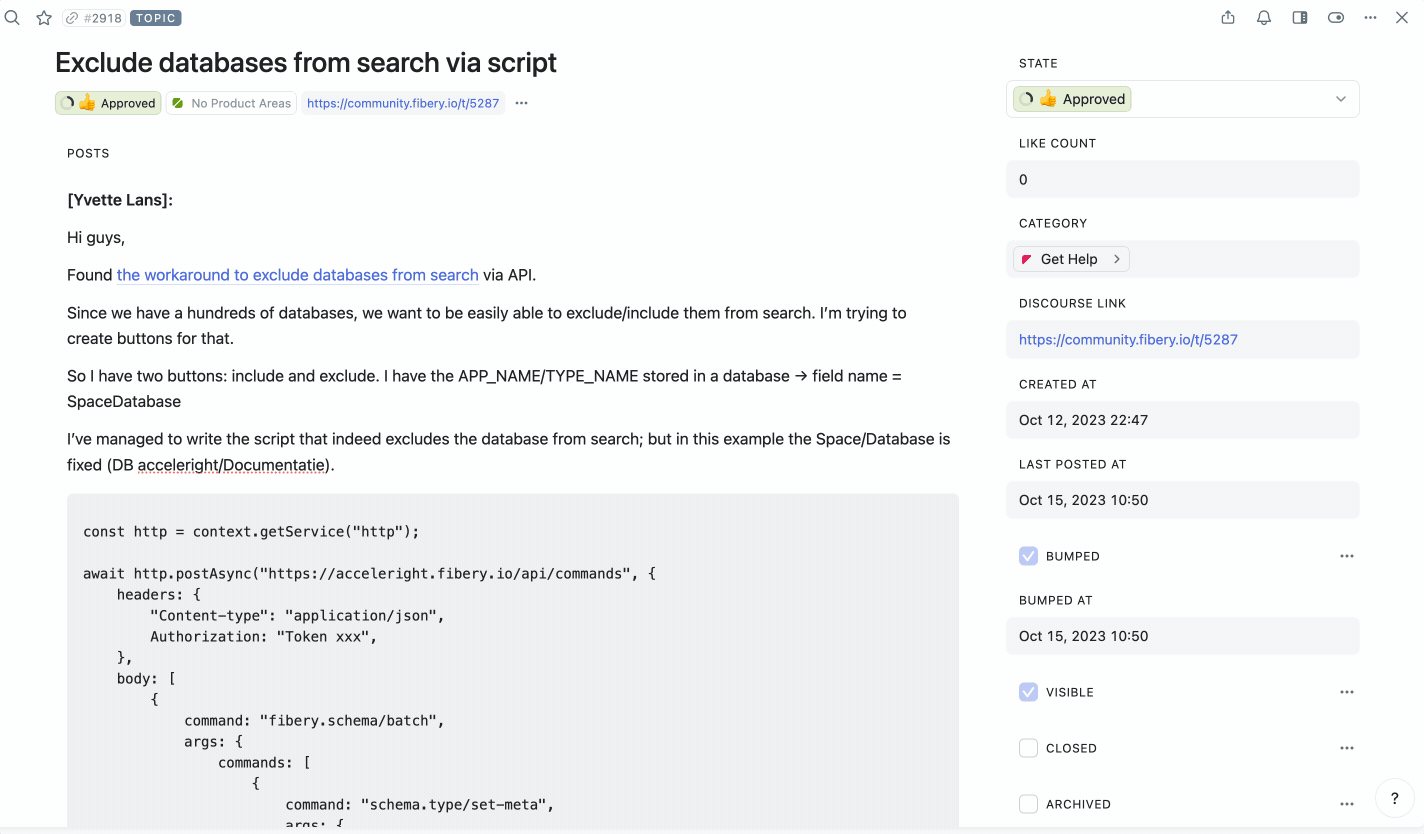
Capture feedback from conversations or Intercom and link it to Feature
You can also track Insights independently, collect more feedback, think and only then decide whether it worth to be implemented.
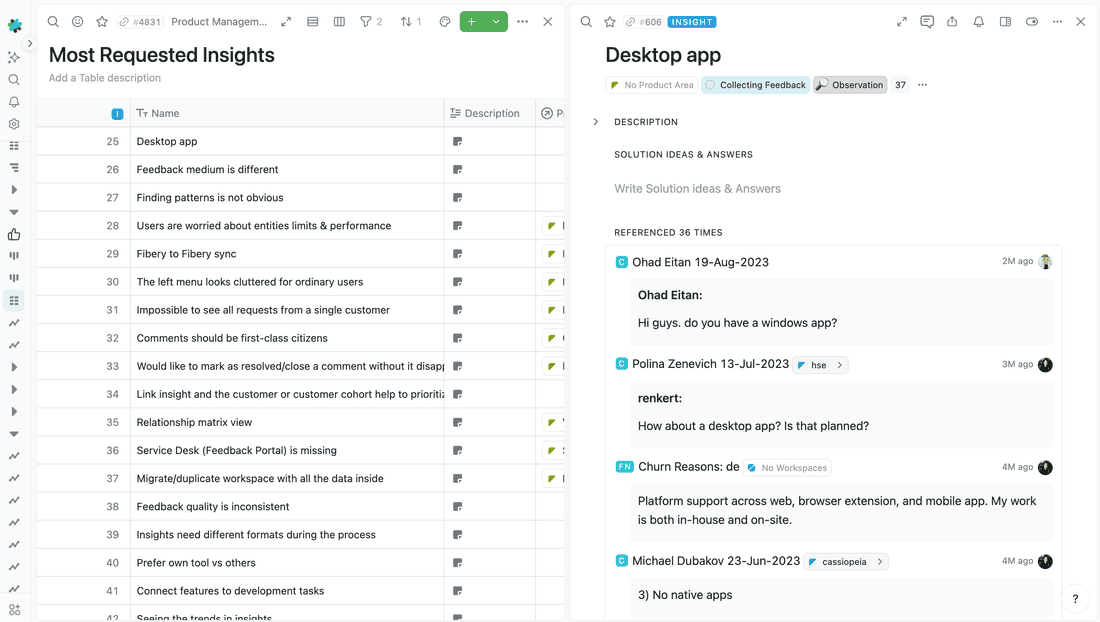
🦐 Fibery has no Portal to collect feedback. It is possible to create Public Roadmaps, but Productboard is stronger here anyway.
Ideation: Features specification
Ideation is very important for product development. Usually, it’s handled via Documents and Whiteboards. For example, you use Google Docs and Miro. In the ideal world, you store ideas, brainstorming sessions, and feature specs in a single place. It’s great to have the whole product vision connected to plans and features.
🦐 Unfortunately in Productboard this area is very limited. Documents are pretty poor and unpleasant to use.
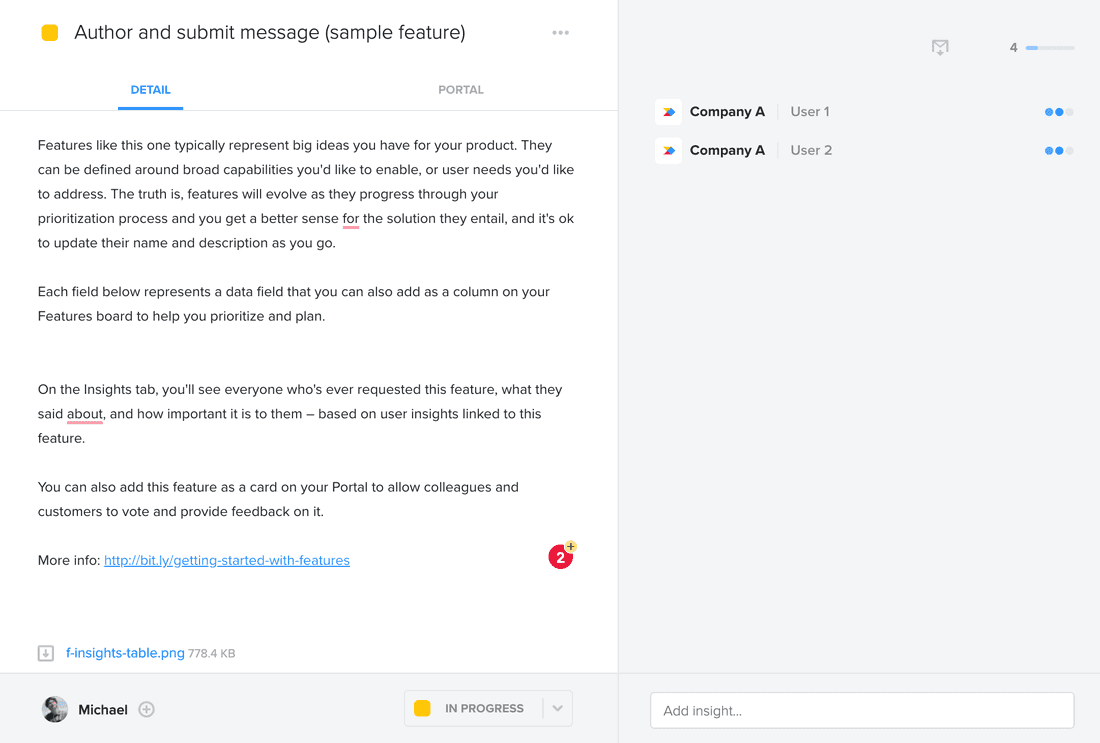
💪 Fibery focuses on ideation deeply. You can create collaborative feature specifications and collaborative Whiteboards. Editing capabilities are quite powerful, you can comment inline, insert whiteboards, and links to other entities into specifications.

Fibery has powerful collaborative Whiteboards as well. You can create Whiteboards inside Features or Ideas to brainstorm things and make everything more visual. Usually, you use a separate tool for that, but having everything in a single place is just so much more enjoyable!
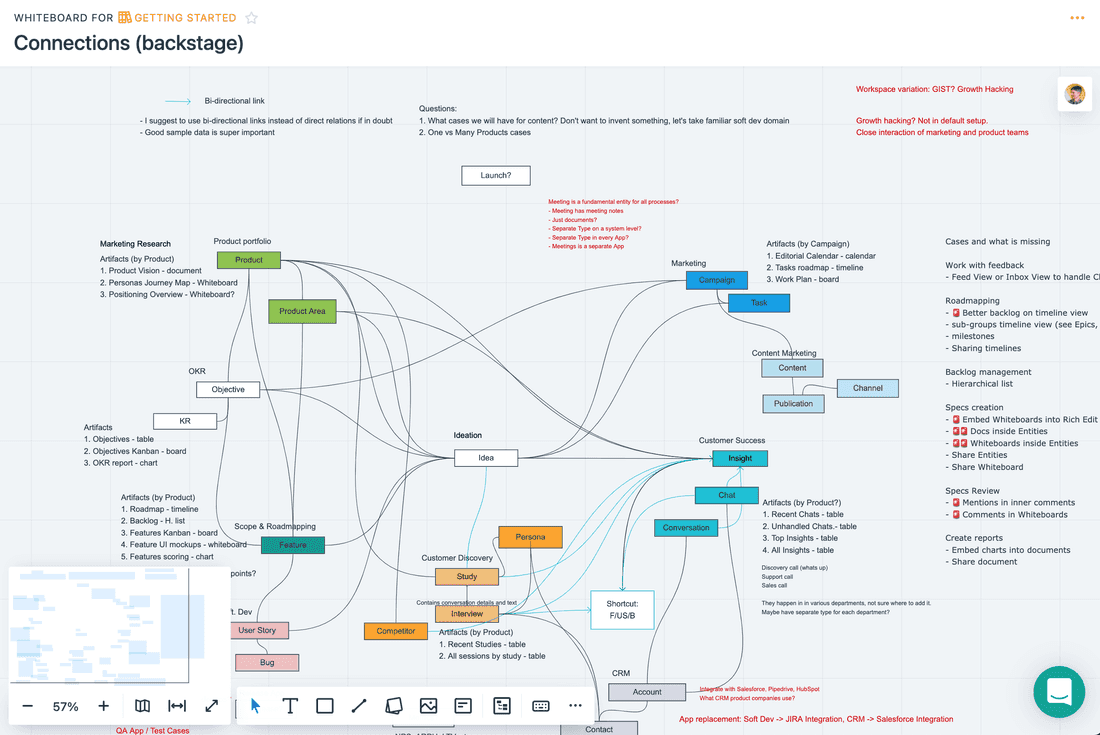
Give Fibery a Try 🥹
Bring your user feedback, ideation, and product strategy into a connected Fibery workspace.
Product Strategy
Product strategy defines what we implement in a product. It’s always a good idea to link product strategy to execution and see what features we implement to meet objectives and goals.
🦐 It’s possible to define Objectives in Productboard and link Features to Objectives, but everything feels somewhat weird. There is no way to set Key Results and track Objective execution.
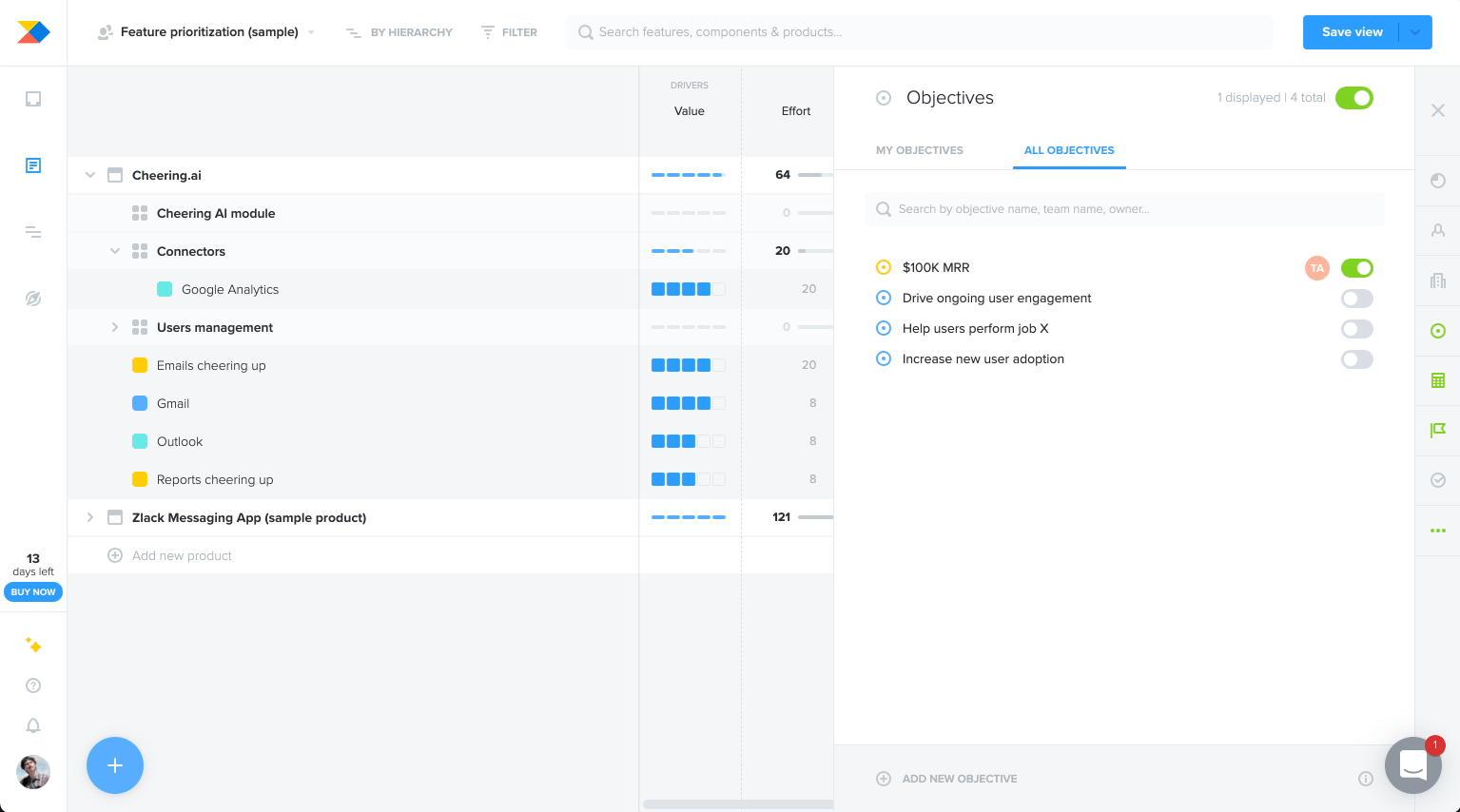
Create Objectives and link Features to Objectives
There is one interesting view where you can prioritize Features for Objectives on a 2D chart.
💪 In Fibery Strategic planning is much more flexible. You can create Objectives for any Product, create Key Results, link Features/Initiative/Marketing Campaigns to Objectives, and track Objectives’ progress as well.
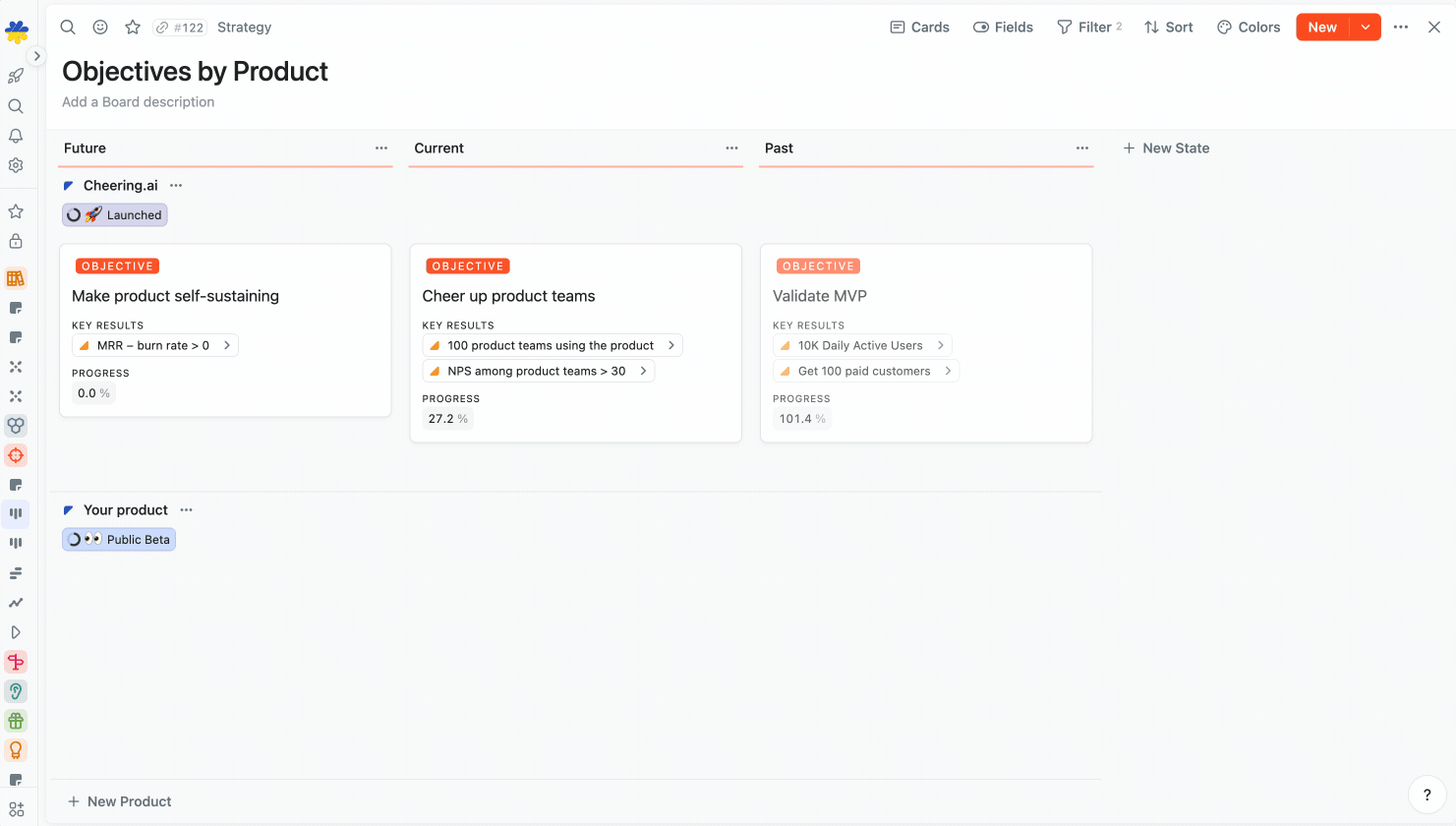
Set Objectives for Products, see them on a Kanban board, track Objectives progress.
Product Roadmapping and Planning
Features prioritization is one of the hardest problems in product management. Usually, some formal model works better than manual prioritization. You also should quantify customers’ feedback and include it in the model.
I think this is the most powerful area in Productboard. You can create hierarchical backlogs very easily and set custom scoring themes. UI is fantastic here and very pleasant to use. Almost everything can be updated inline.
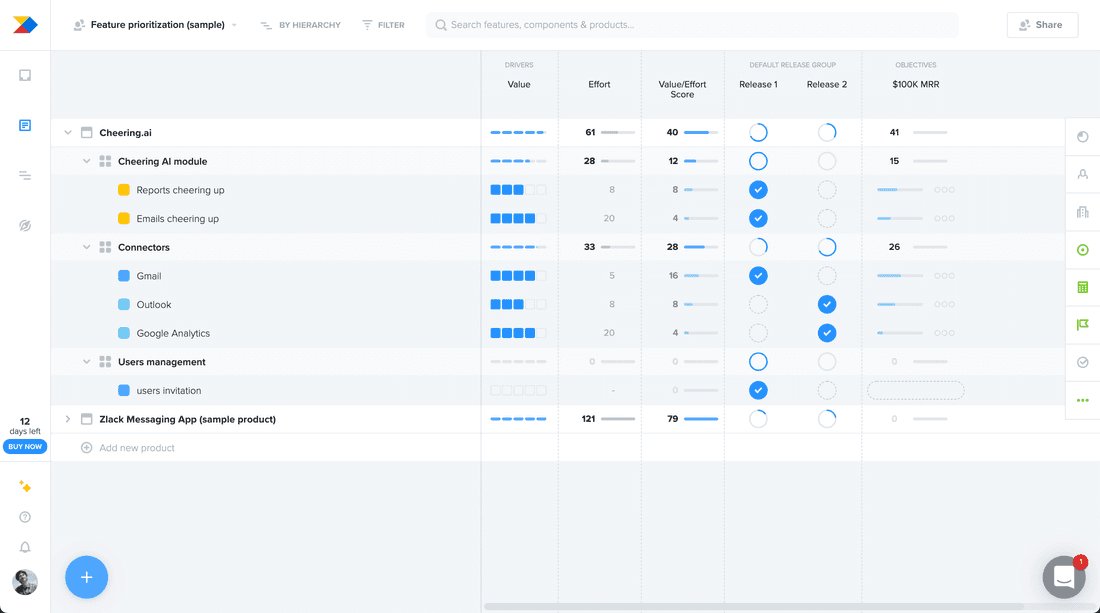
Prioritiations score is super customizable. You can create your own drivers, set weights and use various prioritization techniques (like feedback-driven or score-driving). Prioritization Matrix is a nice view where you can easily change various parameters, like effort and value, in a visual way:
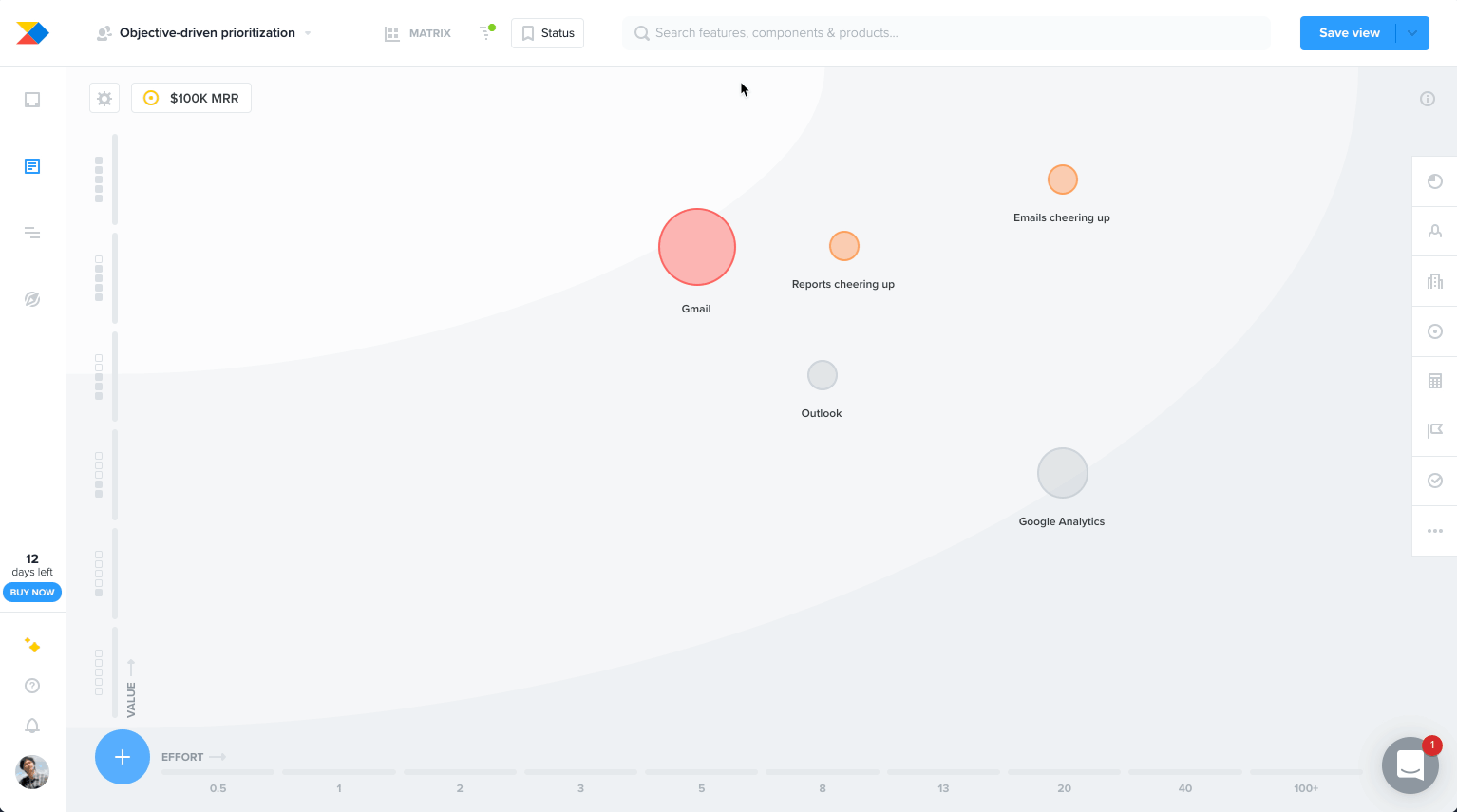
Set priorities in a visual way using prioritization matrix.
Product roadmaps in Productboard is good. You can add Features, group them by Products, drag them around, set milestones. One problem is information density, Features are quite large and if there are dozens of them, the Roadmap becomes too large to scan easily. Dependency management is also there.

In Fibery backlog management is quite advanced as well. You can see the full product hierarchy, update fields right here and open features easily in a right panel.
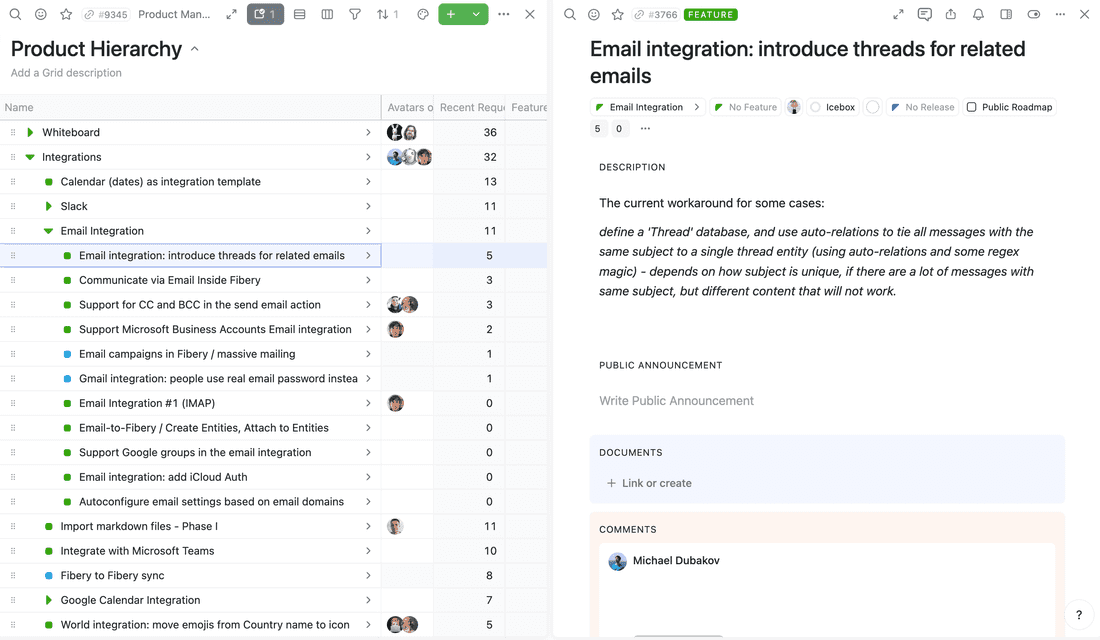
Prioritization is very powerful in Fibery as well, you have no limits and can create custom scoring formulas. For example, RICE formula looks like this in Fibery:
((Reach * Confidence.Value) * Impact.Value) / Effort
Product roadmaps are similar to what you have in Productboard. You can add milestones and easily zoom-in/zoom-out to have a comfortable timeline scale and see not only Features but anything you like: Objectives, User Stories, Initiatives, etc.
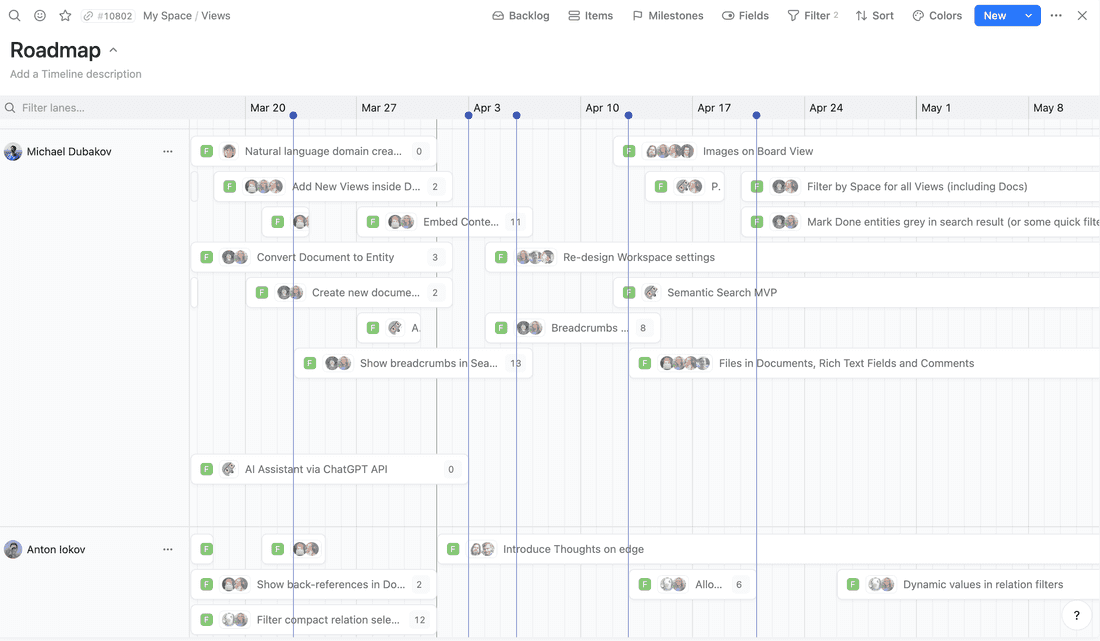
Software Development
🦐 In Productboard you can’t track software development, but have to use some external tool, like Jira or Trello. However, there is no Linear integration and Linear is quite popular these days.
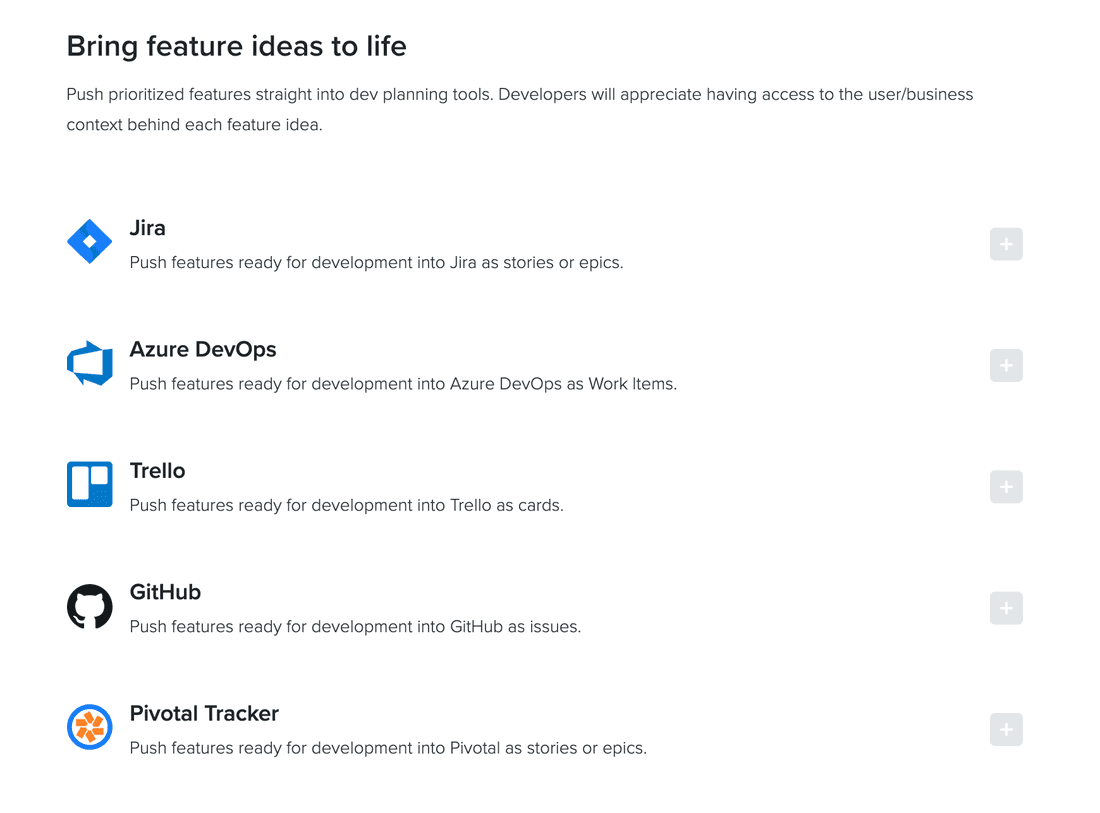
The problem here is silos. Silos are bad for cross functional teams. Suddenly developers have a hard time seeing real Features or Objectives or even see real customers’ feedback related to these Features. It is hard to split features into User Stories and keep product management and software development in sync. In general, this is a deep philosophical problem: specialized tools reinforce silos inside a company where information flows are impeded by artificial obstacles and this can lead to poor decisions. Integration solves this problem partially, but this is just a workaround to alleviate some pain.
💪 In Fibery you can do both. You can connect Jira or Trello, but the best way is to track software development right in Fibery. It’s more powerful than Trello and in most cases good enough to replace Jira.
Fibery supports Scrum and Kanban processes, so you can define Sprints, split Features to User Stories, estimate them and execute Sprints. You can also define your own agile process.

The great thing is that Bugs and User Stories are connected to Features, so you can easily trace execution level as a product manager, or check actual Feature details and feedback as a developer.
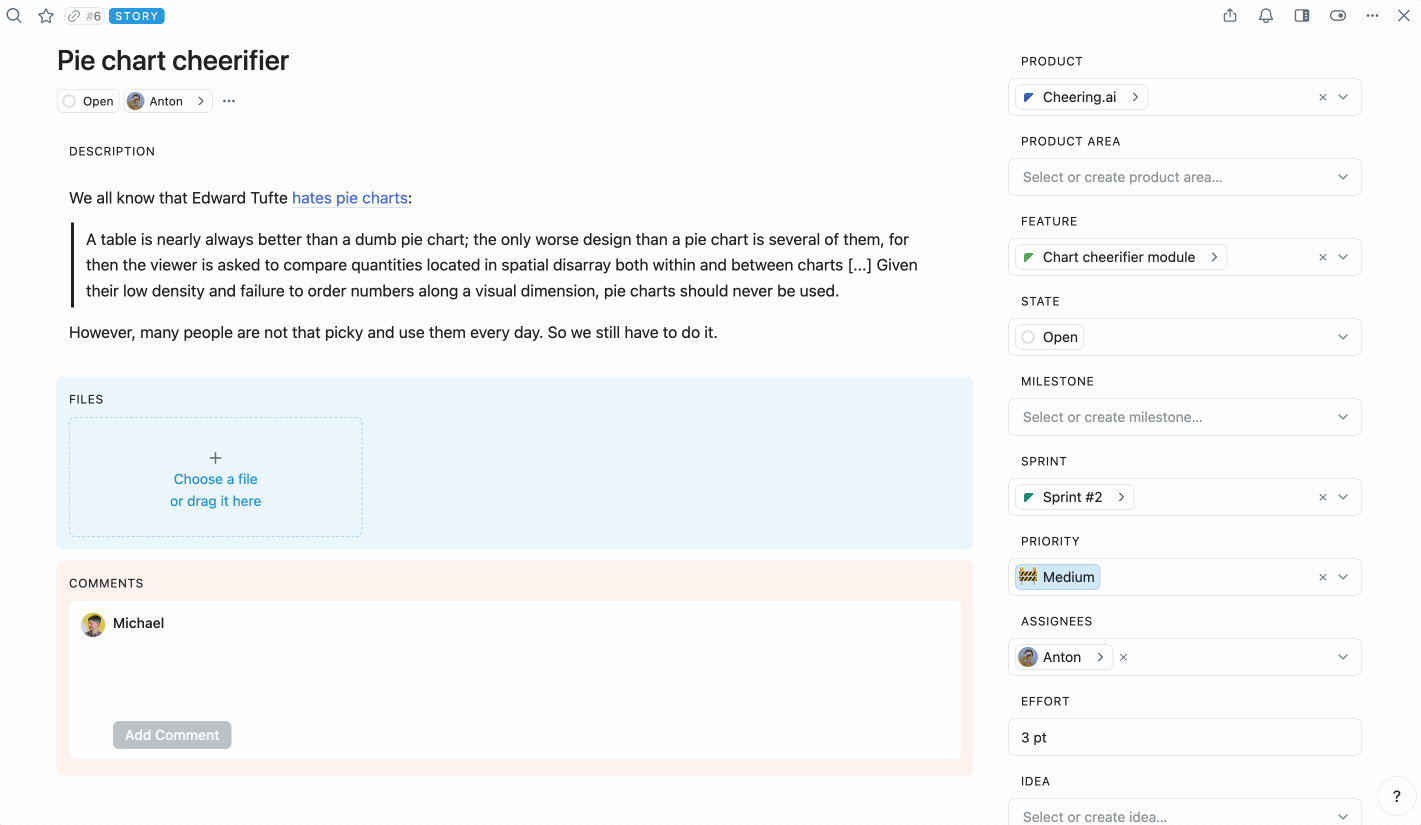
Navigation between Stories and Features.
You can also set up GitLab or GitHub integration and link Stories/Bugs/Tasks to Merge Requests.
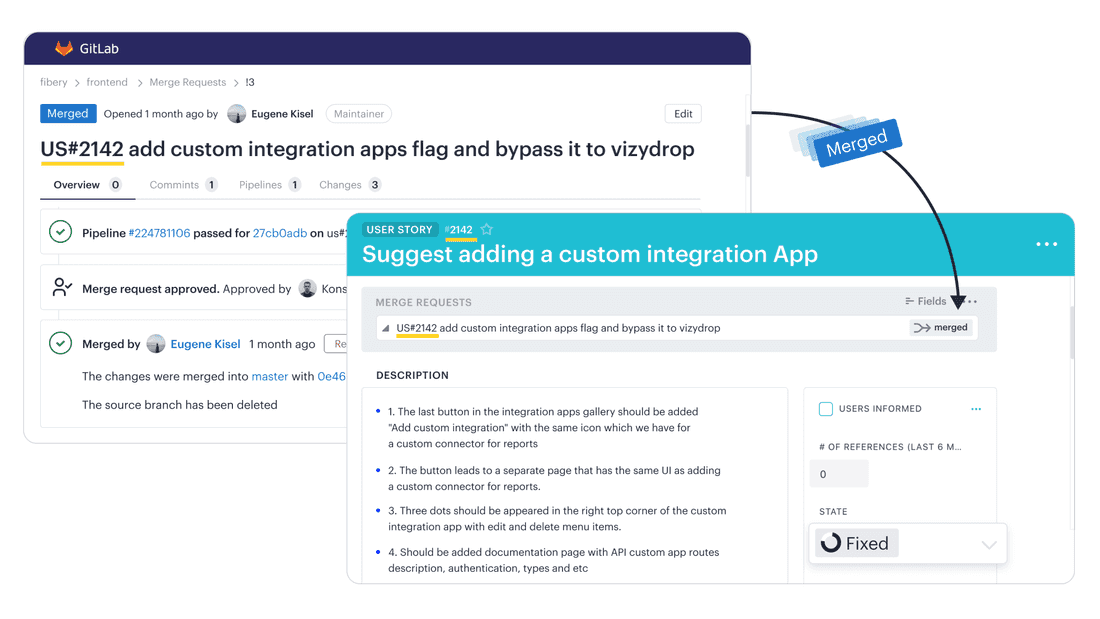
User Research
When you want to learn something about your potential customers, you have to be proactive and do user research: define user persona, plan studies, run interviews, document results, and capture highlights. This is one more way to have useful feedback and build something viable.
🦐 User Research is almost absent in Productboard. All you can do is capture calls/meetings feedback into Notes and connect text to Features. But it is very unstructured and hard to manage since Notes just don’t have all the required fields.
💪 In Fibery there is a separate Space to plan, execute and analyze User Research studies.
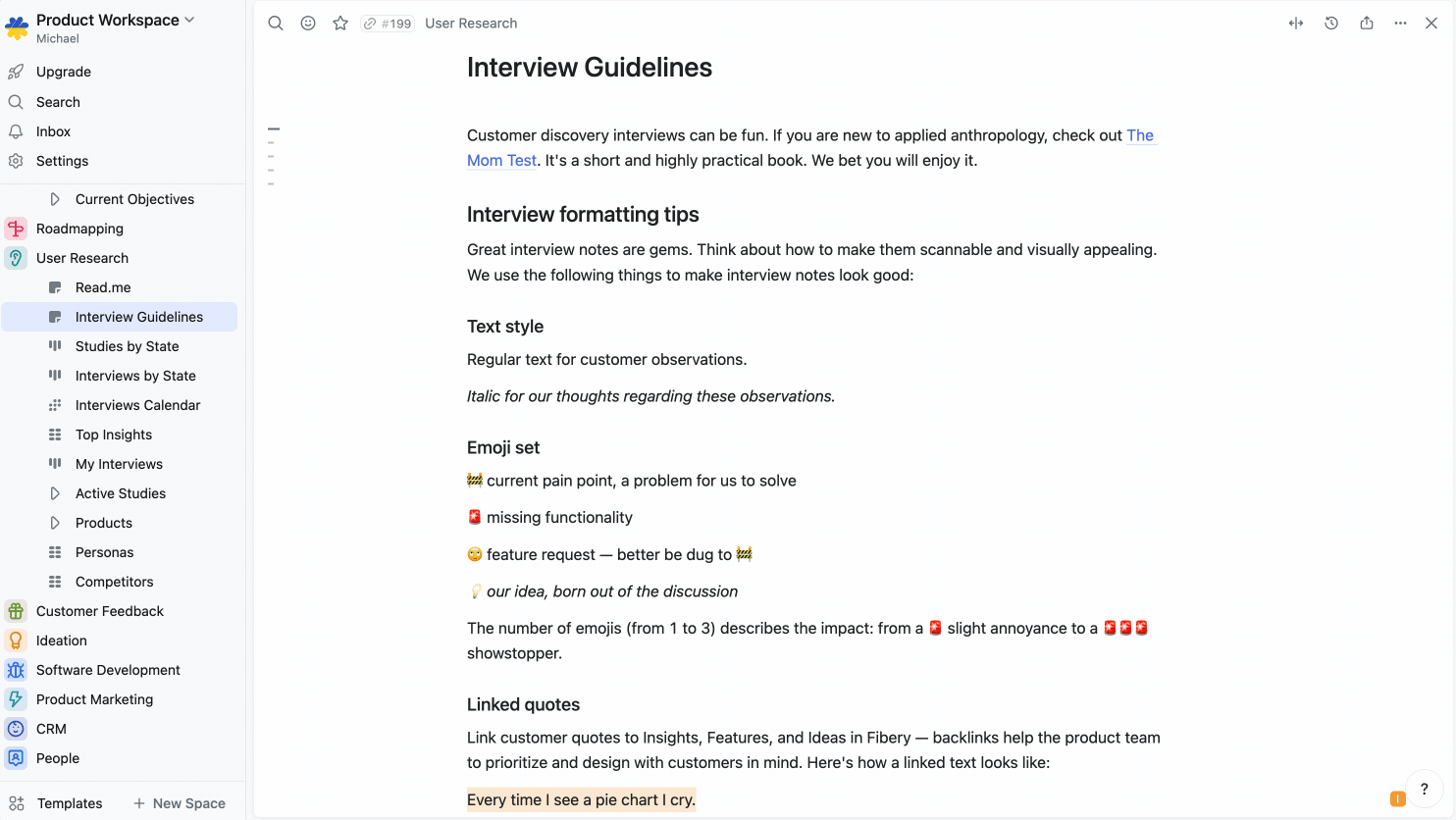
Organize user research studies, capture meeting notes and insights, link them to features and ideas.
Reporting
💪 In Fibery reports are Tableau-like, you can play with data and create very powerful and unexpected reports. You can create reports based on history information and states transitions like CFD, Burn-up and Burn-down, flow efficiency, etc. It helps to spot problematic states in the product development process.
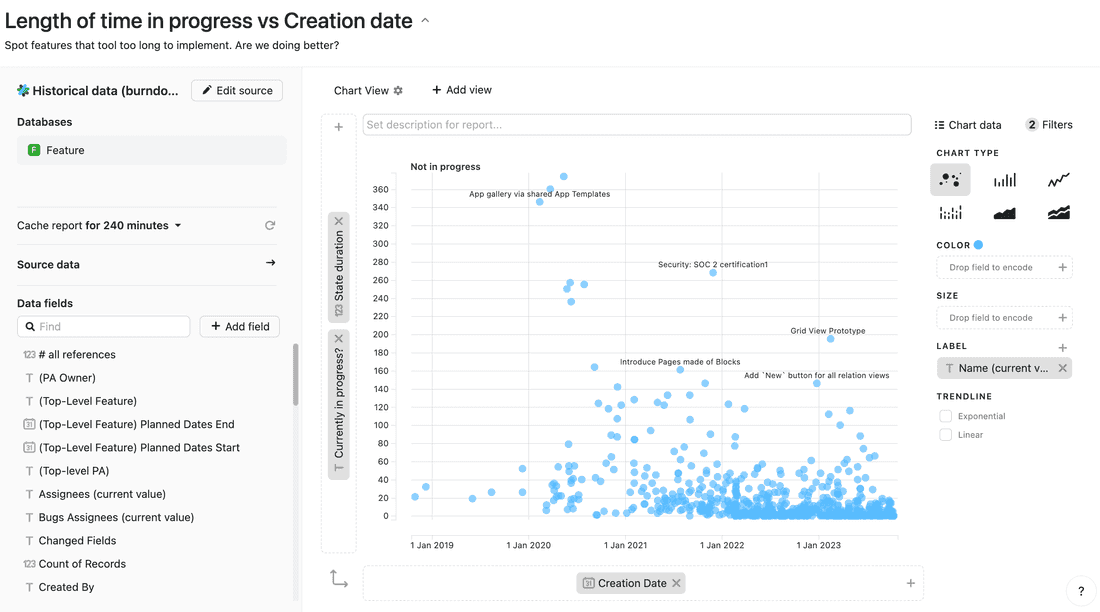
In Productboard reports are OK, but they are are not as flexible as in Fibery.

Connectivity
Information connectivity defines information quality in some way and allows people to explore information much more easily. Imagine what happens when everything is disconnected, like there are no links between feedback and features, between objectives and work, between insights and ideas. Suddenly you have a hard time understanding why some particular feature is on top of the backlog, or why we implement these 5 tasks.
In Productboard connectivity is quite good. You can link feedback to features, create deep product hierarchies, link objectives to features. There are problems with links to software development and interlinking features though.
💪 In Fibery connectivity is the core. You can flexibly set relations between all entities and thus form a complete product knowledge graph in a tool:
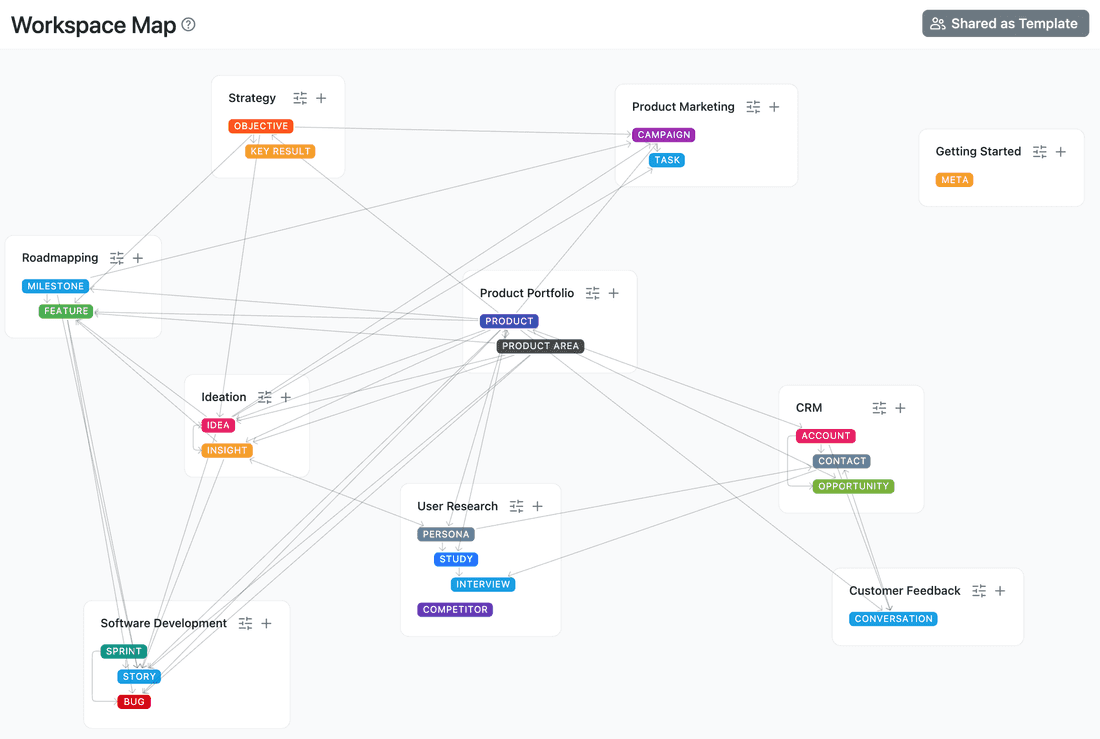
Customizability
Companies are different and every company has a unique set of product management processes. It’s hard to create a tool that fits many companies in fact. There are two polar ways to attack the problem:
- Create a specialized tool and add some customization options
- Create a generic tool and add some specialized features
Productboard follows the first option. It has some customizability built-in, but not so much in fact. You can turn on and off some modules, like Portal or Feedback management. You can customize states for Features and prioritization scoring system. And that is basically it. There is no way to add new entities, like User Stories or Bugs. There is no way to reflect company structure like Department → Teams. There is no way to add Key Results to Objectives.
💪 Fibery follows the second option. It’s a LEGO, so you can create your own Spaces and fine-tune them to your needs. You can add custom Types (Epics, Sprints, Departments, Teams, etc). You can connect them as you wish. You can add or remove fields to any Type. You can create custom Views to visualize information as a Board, Table, Timeline, Calendar, or Report. You can create product marketing space, team retrospective space, CRM space, project management space, etc.
Extensive customizability comes with a cost — Fibery is not so easy to grasp. When everything is hardcoded you have to learn the structure once and get used to it. When everything is flexible you can change the structure and the learning process never stops.
However, in the long run, this pays off. Every company is not set in stone. Companies grow, processes change. Fibery can accommodate the changes and change itself, Productboard will have a hard time keeping up.
AI
Productboard has AI in beta now. It is mostly summarization and categorization so far, but it seems they are moving forward with it pretty fast. I have no doubts there will be decent AI support soon.
Fibery AI is flexible and can do many things, including summarization, sentiment score calculation, categorization, text generation and other things. Basically, you have access to prompts and can build your own AI things in text and automations. Also Fibery has Semantic Search, so you can find and connect feedback to features and insights faster.
API & Integrations
🦐 Productboard API is quite limited, you can only operate with Features. Maybe it is enough for many cases though.
Productboard has more integrations and they are pretty useful.
💪 Fibery has powerful API (including GraphQL). You can create databases and build your own schema using API, and definitely, you can do pretty advanced queries and create entities. Webhooks are there as well.
Fibery has fewer integrations, but they are pretty useful too.
Price
Productboard is expensive. For solid version you have to pay $80 per user per month. It means you will use it only inside product team.
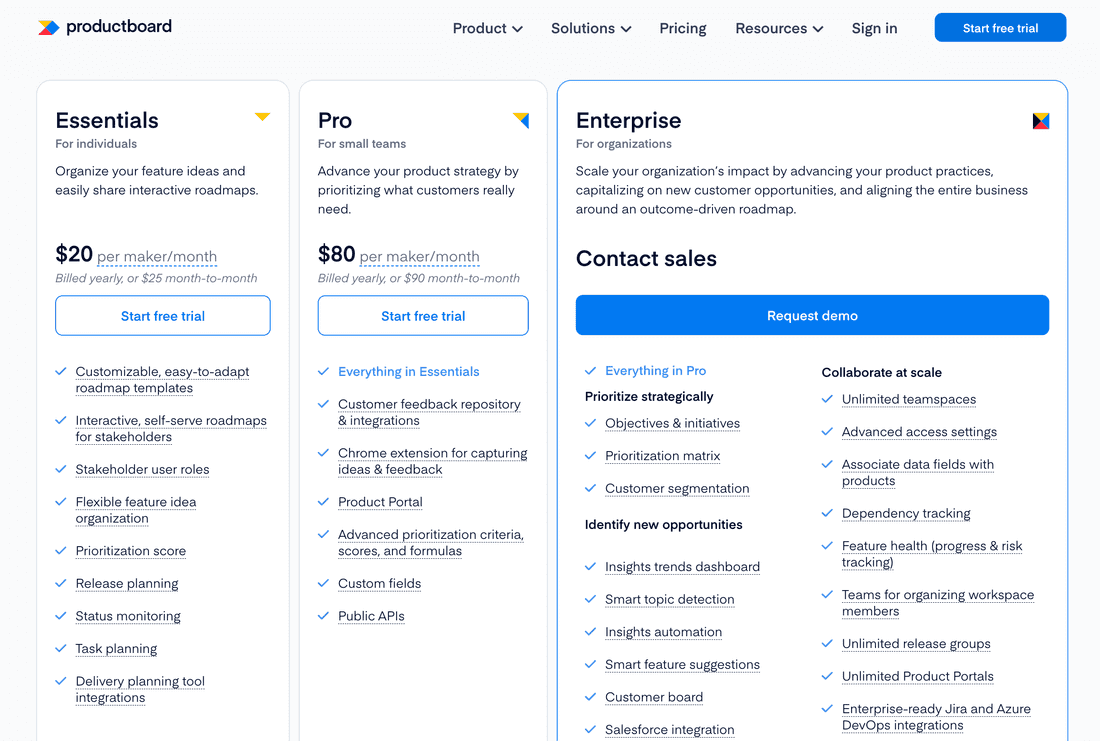
Fibery is much cheaper, $10 per user per month plan is usually enough for most teams if you don’t need SAML or other heavy things. Not sure how much Enterprise plan costs, but it is safe to say that Fibery is ~10x cheaper.
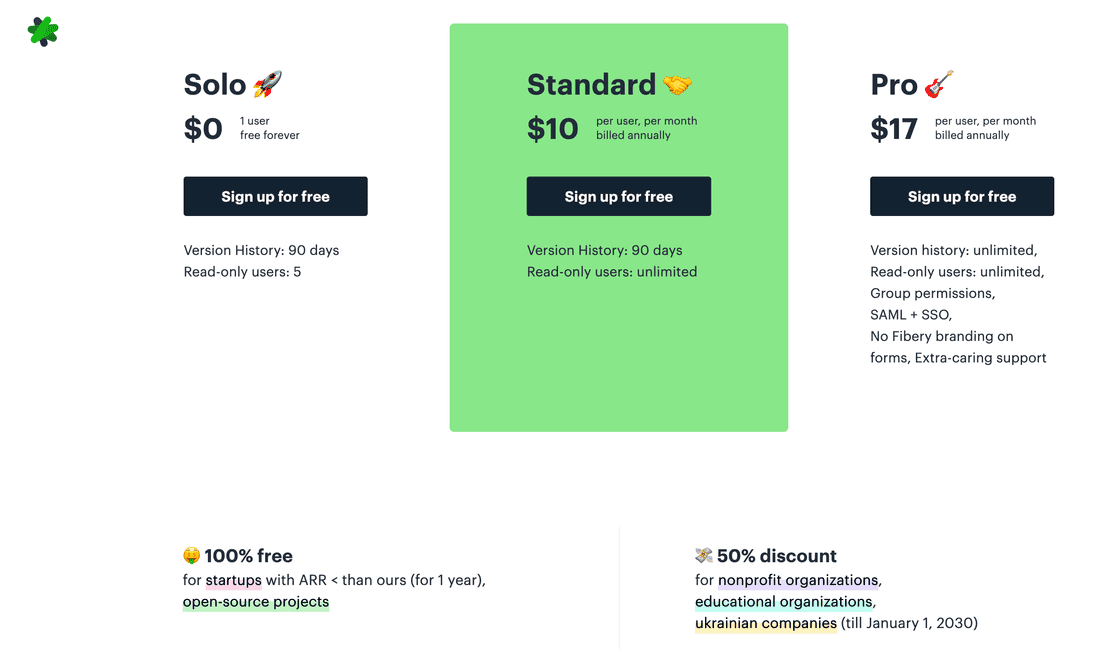
Summary
Let’s compare strengths 💪 and weaknesses 🦐 in Fibery and Productboard.
Fibery
---
💪 Feedback linking to Features, Ideas, Bugs, and anything you want
🦐 No Customers Portal
💪 Ideation: collaborative docs and whiteboards to create specs
💪 Flexible strategy planning via OKR or any custom process
💪 Software development process support (Scrum, Kanban, your own)
💪 Reports are really powerful
💪 Custom product metrics
💪 Semantic Search
🦐 No dependency tracking
💪 User Research process is there
💪 Extensive connectivity between all processes
💪 Extensive customizability, since Fibery is a no-code tool in its core
💪 Powerful API (GraphQL)
💪 ~10x cheaper
🦐 Not so many integrations
Productboard
---
💪 Feedback collection from Intercom, Zendesk, Slack, and manual Notes
💪 Feedback linking to Features
💪 Nice feedback inbox
💪 Customers Portal
🦐 Ideation: poor features specification
🦐 Strategy planning is weird and limited
💪 Product Roadmapping and Planning is awesome
💪 Custom prioritization schemes
🦐 No Software development process (but many integrations)
🦐 No User Research process
💪 Integrations are quite good
🦐 Very expensive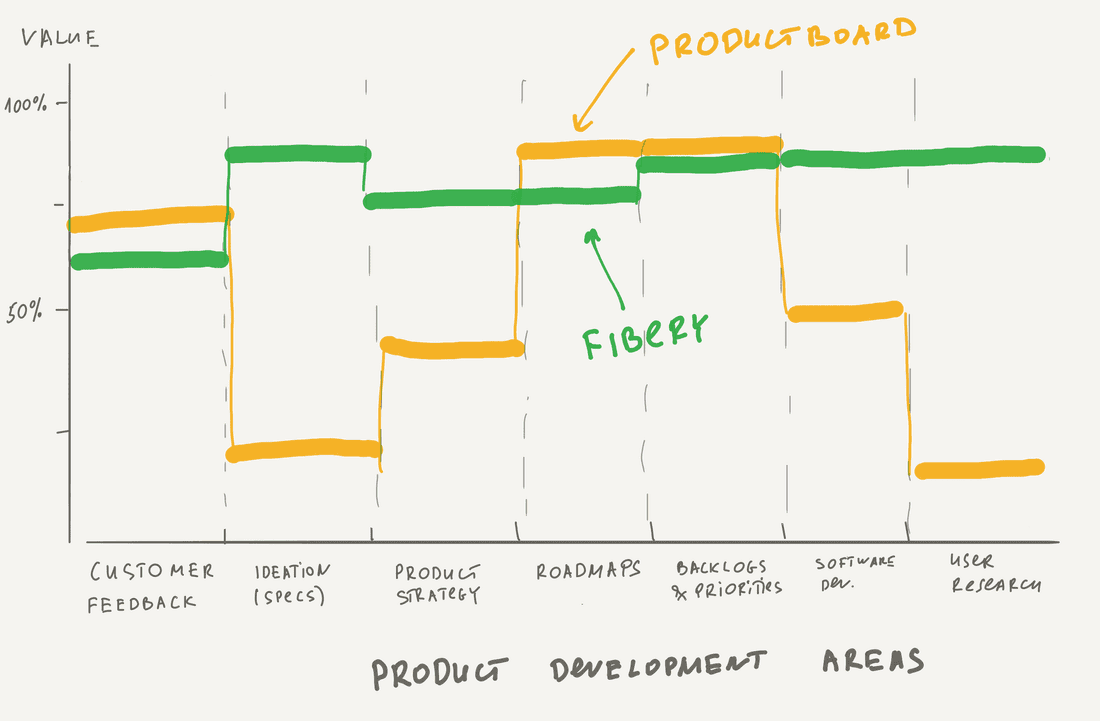
Psst... Wanna try Fibery? 👀
Infinitely flexible product discovery & development platform.